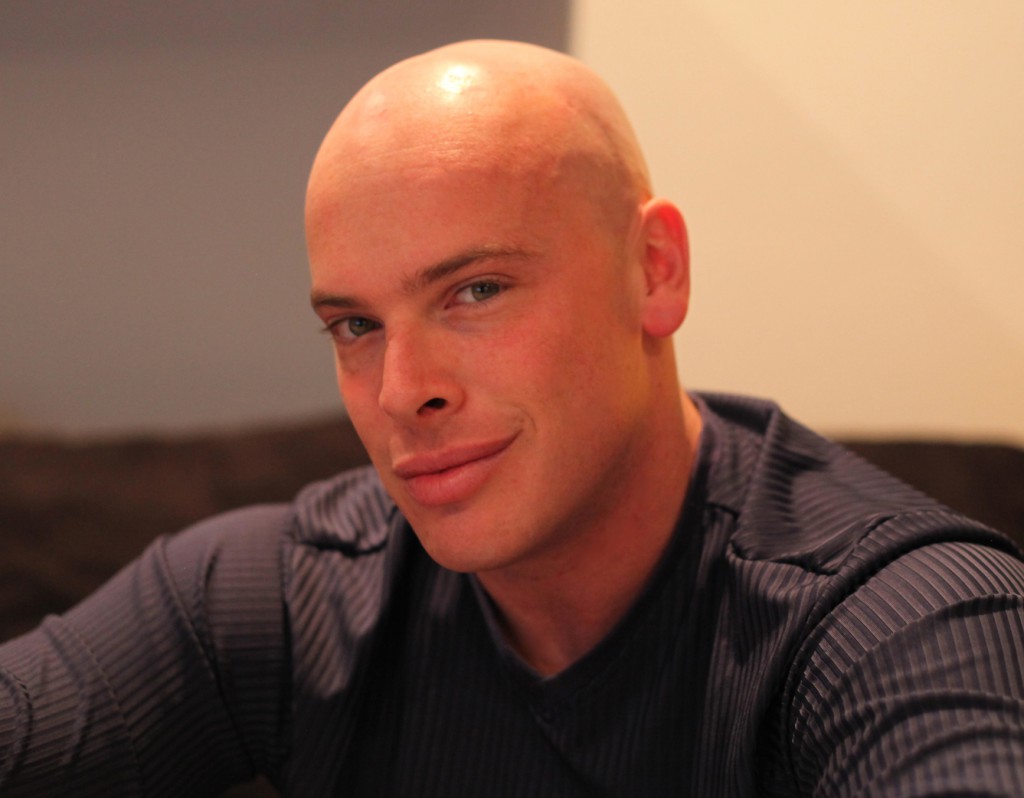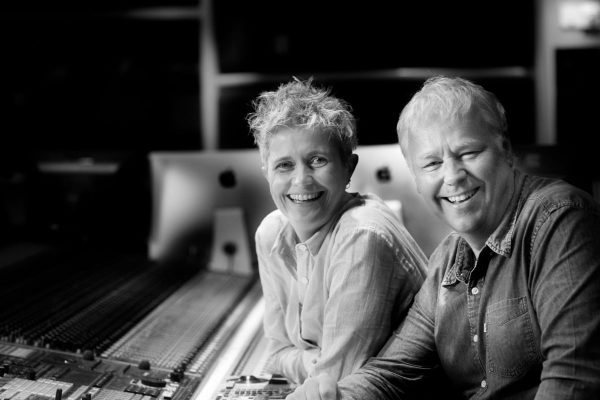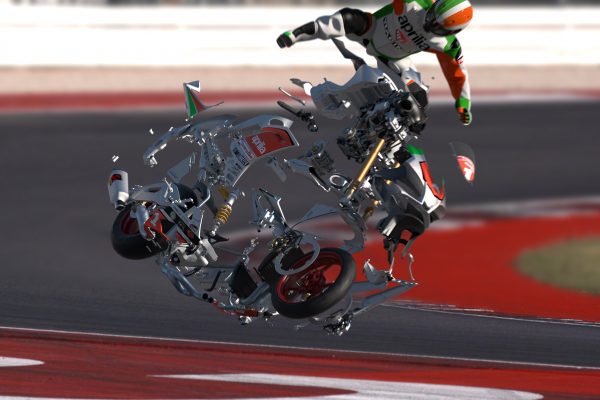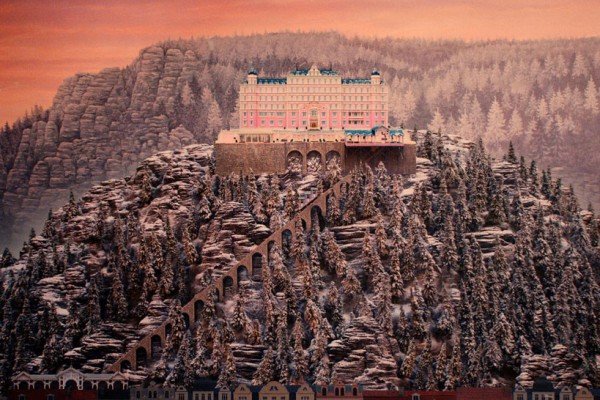How the special effects crew behind Star Wars: Episode 7 – The Force Awakens bought another iconic Star Wars aerial battle to life.
Article by Drew Turney
As well as recapturing the sense of charm and fun of the original Star Wars trilogy in last year’s Star Wars: Episode 7 – The Force Awakens, cowriter/director JJ Abrams was determined to give the film a handmade, in-camera aesthetic.
He achieved just that by using old-world filmmaking techniques like puppetry, make-up effects, on-set pyrotechnics and more, but because of the fantastical nature of the story, the use of pretty extensive CGI was inevitable.
It was still Abrams’ mandate to make everything feel as real as possible, however, and nowhere was such creative direction more apparent than in the graveyard chase, where TIE fighters chase the Millennium Falcon across the sandy wastes and downed warships of the planet Jakku.
Video & Filmmaker spoke to two of the department heads that made the graveyard chase (and so much more) possible to explain how much work went into everything from the on-set preparation to the CGI that gave us the final images.

VFX Supervisor Roger Guyett during the ‘Star Wars: The Force Awakens: A Cinematic Journey’ Q&A at SXSW 2016 (image: Vivien Killilea/Getty Images for Walt Disney Studios).
Roger Guyett, VFX supervisor and second unit director, Star Wars: Episode 7 – The Force Awakens.
A veteran of Industrial Light and Magic (ILM), four-time Oscar nominee Guyett was ‘The Force Awakens’ visual effects (VFX) supervisor and second unit director.
He’s been in charge of the VFX on some of the biggest movies and franchises ever including Harry Potter, Pirates of the Caribbean, Mission Impossible, the Star Wars prequels and the Star Trek films (with his ‘The Force Awakens’ director Abrams).
As the VFX Supervisor you wrangle a lot of effects companies and providers. Can the job become more about administration and logistics than the more creative aspects of production on a scene like the graveyard chase?
We had an amazing VFX production department (led by VFX Producers Janet Lewin and Luke O’Byrne, among others) who made sure that didn’t happen. They ensured my time was spent discussing the creative aspects of the project.
The majority of the work was done by ILM and Kerner Optical Co (set up at Bad Robot) was the second biggest vendor, so there weren’t that many companies involved. But tracking and organising the work is still a gargantuan task.
I had a lot of help from co-supervisors like Pat Tubach, so I felt very confident about delegating work and communicating ideas they’d address as they passed the feedback along.
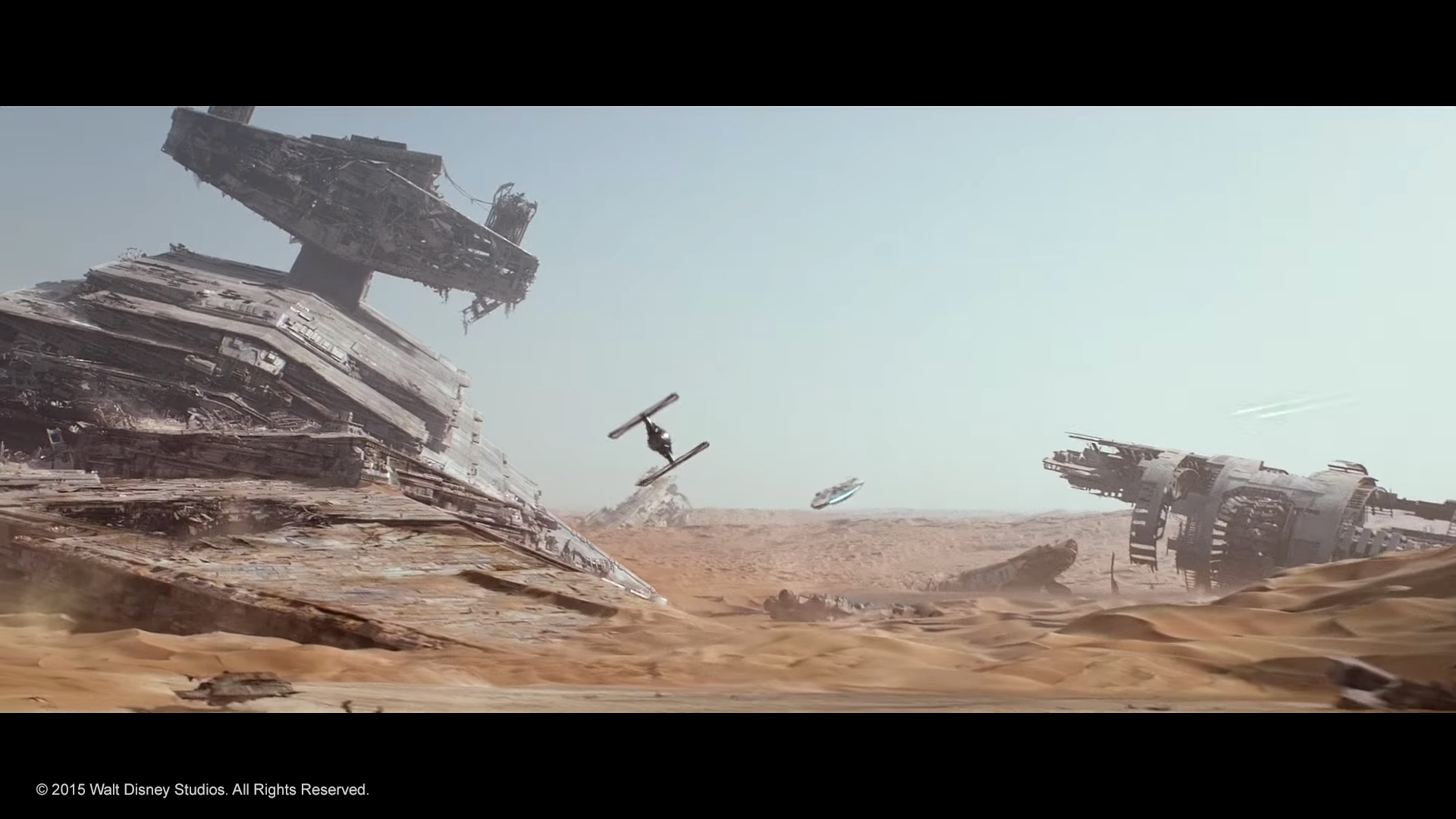
Even though the narrative about the film’s production described how much of it was handmade, the graveyard chase was entirely digital. How did you make it look as realistic as possible?
Digital effects have come a long way and made a significant jump in the last couple of years. I knew we could create a lot of photo-real effects with the new tools available and a digital version of that practical look.
Of course that requires a tremendous amount of homework and attention to detail starting from the way the shots are designed all the way through to the modeling, atmospherics, lighting and composition of each shot. You want the audience to believe what they’re seeing and immerse them in the Star Wars universe.
Brad Alexander, Previs Supervisor, Star Wars: Episode 7 – The Force Awakens.
One of the companies engaged by the production was Halon Entertainment, a group of specialist previsualisation (previs) animators who help the director work out the angles, movement and sense of motion in a shot before the detailed, time consuming and expensive renders for lighting, shadows, colour and all the other elements that make it look like it’s really happening.
A longtime previs and postvis supervisor and CG supervisor (Life of Pi, Avatar, Transformers, Star Trek Into Darkness), Alexander talks about real life references, when to get involved in a production and dealing with the inevitable changes.
Roger Guyett told a con earlier this year he worked harder on Star Wars: Episode 7 – The Force Awakens than anything he ever had. Did you find yourself doing the same just because it was Star Wars or because JJ Abrams is so specific and exacting about what he wants?
First, Star Wars is such a piece of iconic film history that’s loved by many. The filmmakers and artists on this film poured in as much of their craft as we could to make it the best because it was a Star Wars film.
Secondly, is working with JJ. He makes the filmmaking process fun because of the creative ideas he allows us to contribute to. When you’re given that much creative freedom it lets you work harder but makes you feel like the work you do is important and that much more gratifying.
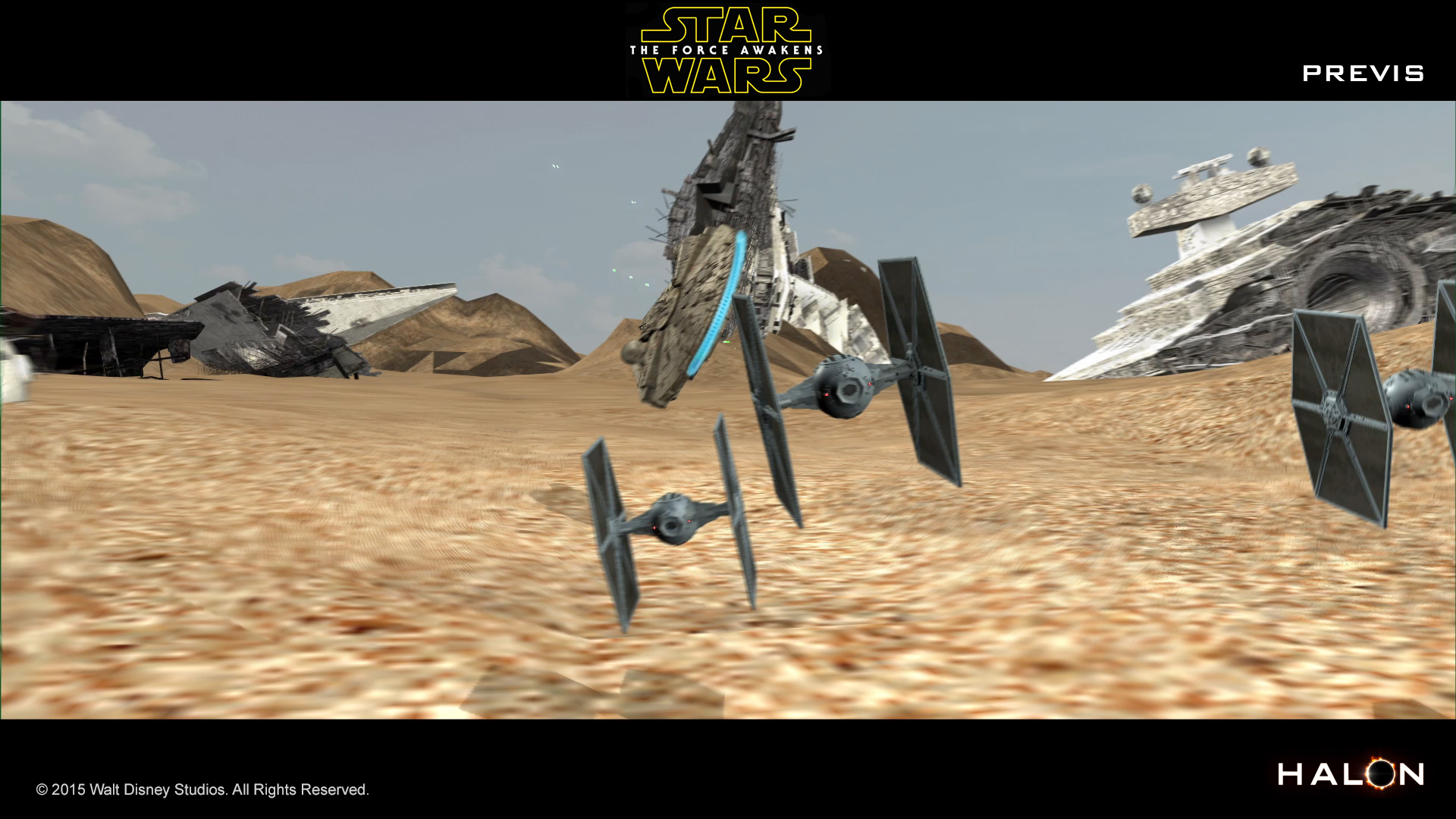
Most people would assume the previs is all just wireframe models to test the angles and movements whereas all the light, shadow and colour is added much later during production CGI. How did visiting or seeing the footage and photos from the real locations in Abu Dhabi influence the previs design of the graveyard chase?
When the production first scouted locations my team and I found the latitude and longitude of each location they looked at. We extracted elevation data from Google Earth of the surrounding landscape as far as we thought we needed in order to cover the scale of the chase, but there were moments where we had to veer off our map to accomplish the scale and wide angles of certain shots.
Production changed locations in the desert a couple of times, but we were quite consistent in making sure we were up to date with where they’d be shooting. We also used an ephemeris so we could calculate the exact angle of the sun so when the production had the Falcon out there they knew which orientation to set it and what time to shoot it to capture the perfect and exact lighting.
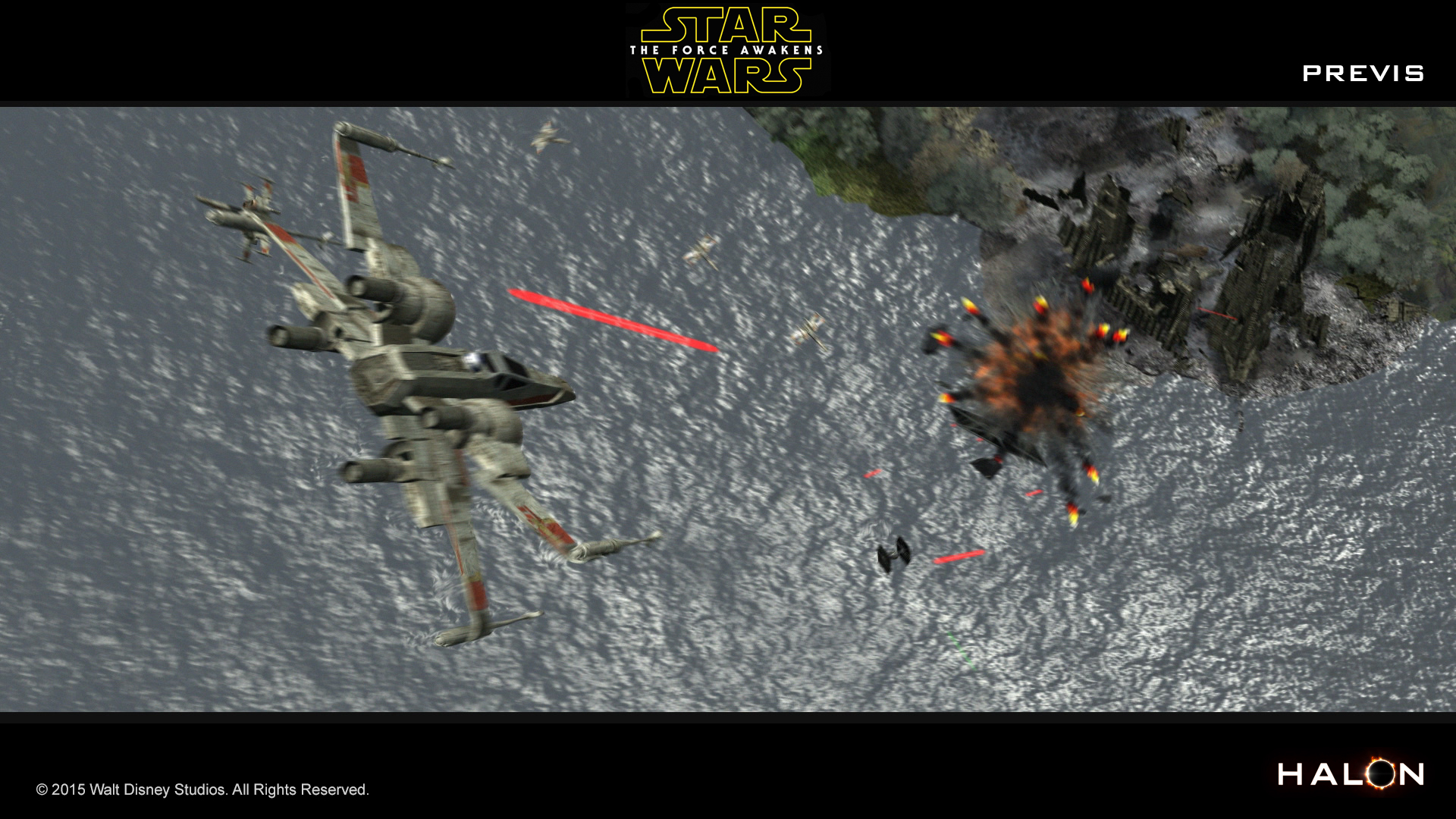
What kind of changes can come up in previs that the storyboards don’t show which might result in script changes?
Not much of the flight choreography – especially the graveyard chase – had storyboards. In fact, there were no storyboards on any of the sequences we worked on.
The script pages were evolving at the same pace the previs sequences were changing as my artists and I worked on it. We had changes of pretty much any type you can imagine. We played around with lots of different ideas trying to work in props and vehicles from the original trilogy and did lots of experimentation to make sure we didn’t overdo (or underdo) it.
We experimented with tons of flight scenarios to get our heroes through the environment and the sequence to figure what just worked and what didn’t.
Even with special effects, filmmaking usually consists of preproduction (where previs would normally take place), production and post-production (where the final camera-ready CGI takes place). How much are the lines between these three blurred because of how the workflow pipeline has changed?
We worked with ILM from the very start so we had a complete loop by the time they received the previs files to work as a base from, so our scene file units all matched up.
In some cases we were even lucky enough to have [vehicle] models provided by them. Some of them were very heavy to work with so we’d lighten their geometric density to make it easier, so when ILM received our scene files most of the time they could just swap out our lower resolution models with their newer, updated ones as needed.
As far as blurring the lines, every film is different. It’s hard to say Star Wars had any lines as so much in the film was a constant hybrid of different techniques, constantly working together to achieve the same goal.
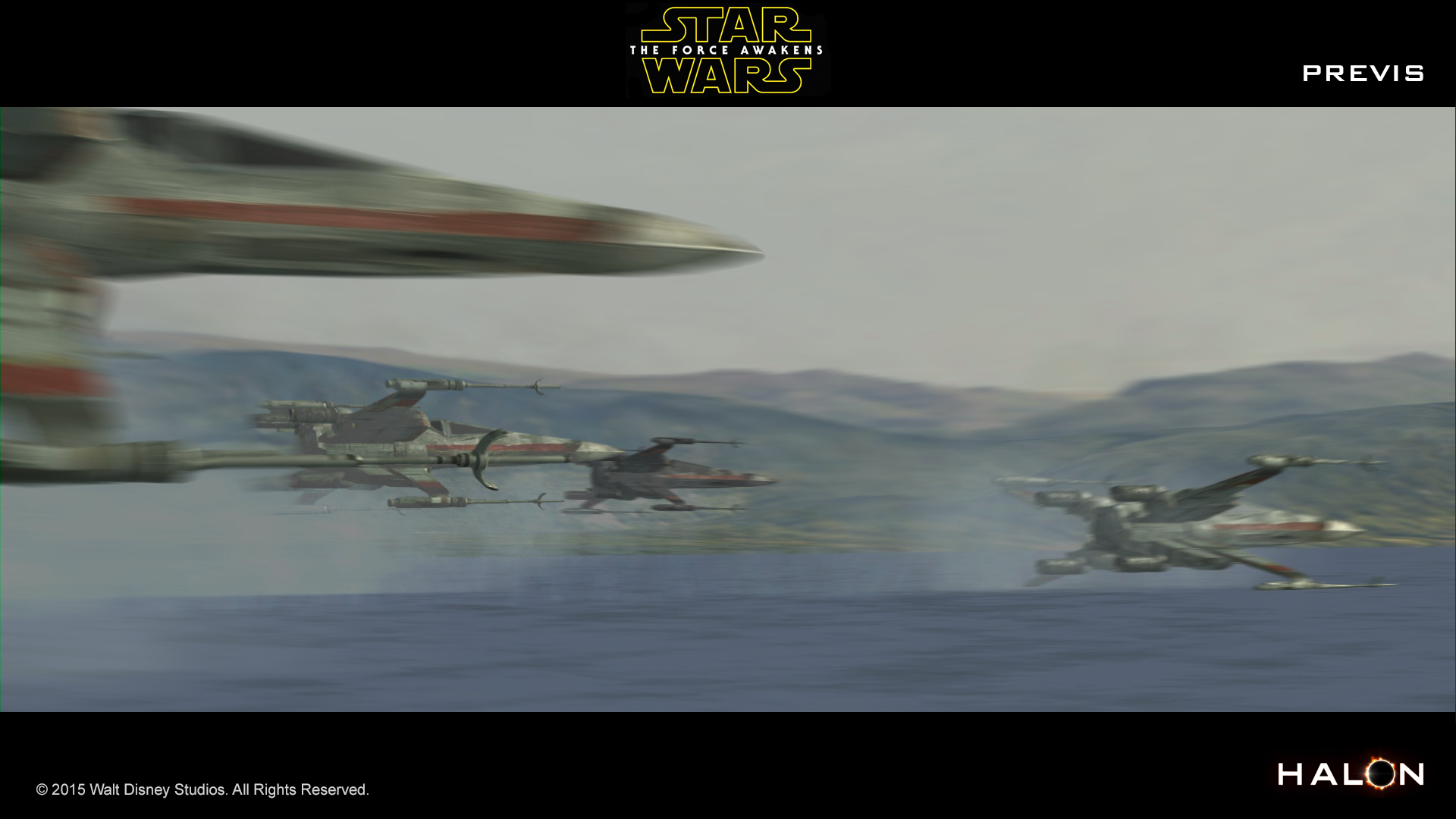
All images courtesy of Walt Disney Studios.


